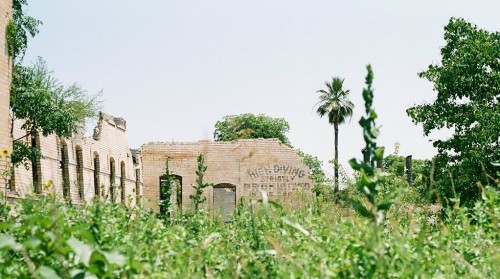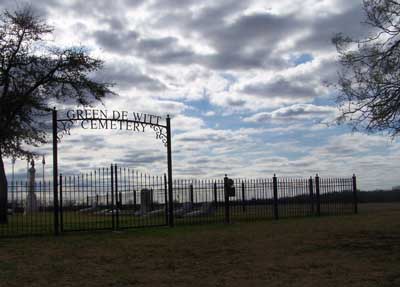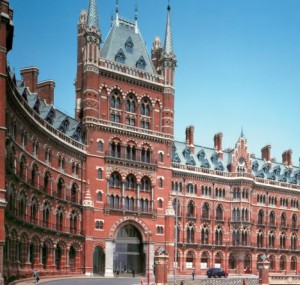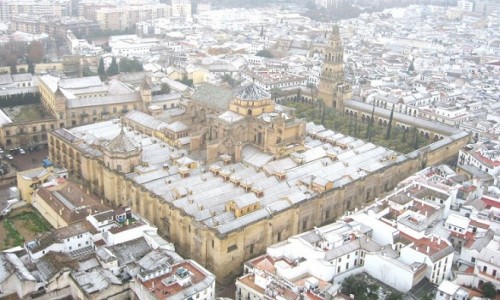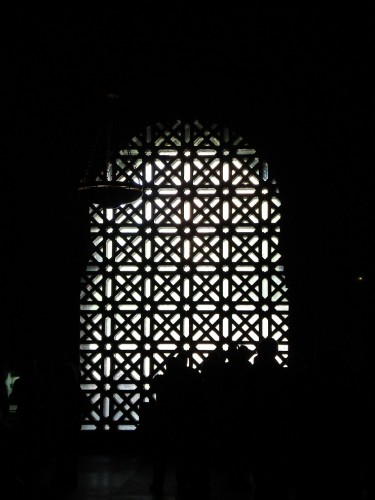On the south side of San Antonio there are the ruins of a turn-of-the-last century spa resort called Hot Wells. Once there was a luxury hotel, and a splendid bathhouse, featuring hot mineral baths. It’s in ruins now … but splendidly evocative ruins.
Architecture
Texas Travelogue:Gonzales
The town of Gonzales is about an hour’s drive east and a little way south of San Antonio. In the days when Texas was a Spanish and then a Mexican posession, San Antonio, Goliad and Nacogdoches were the centers of what little population there was. But in the 1820s, the newly-established and independent Mexican nation sought to encourage America and European entrepeneurs to take up generous land grants, and bring in settlers. Stephen F. Austin was the one that everyone knows about: the urban heart – if you could call it that – of his grant was at San Felipe on the Brazos River.
St Pancras Renaissance Hotel
This is the big news in London, not the referendum whose results we shall not know till tomorrow evening: the St Pancras Renaissance Hotel, a gorgeous, late Victorian building, between St Pancras Station and the British Library, saved in the sixties through the tireless work of the great Sir John Betjeman, has officially reopened after many years of renovation and reconstruction. More on the Conservative History blog.
I think of Cordoba
[ cross-posted from Zenpundit ]
1.
I think of how the Mezquita, once a mosque, must have looked when its whole floor was a single, arched space of prayer:
before Moorish Cordoba was conquered, and the conquerors built a cathedral in the very heart of the place:
like the petals of a flower opening inside the sepals, or a cancer sprouting within the body for so much depends on your understanding of prayer.
2.
And I think how lovely it still looks, cathedral nestled within mosque under the snow, to this photographer’s eye:
3.
And I think of Seymour Hersh, who has drawn flak for comments in a recent speech about the Bush war in Iraq, and Obama’s continuation of Bush policies and here’s the part that caught my eye:
“In the Cheney shop, the attitude was, ‘What’s this? What are they all worried about, the politicians and the press, they’re all worried about some looting? … Don’t they get it? We’re gonna change mosques into cathedrals. And when we get all the oil, nobody’s gonna give a damn.'”
“That’s the attitude,” he continued. “We’re gonna change mosques into cathedrals. That’s an attitude that pervades, I’m here to say, a large percentage of the Joint Special Operations Command.”
And I think then of the great cathedral of Hagia Sophia in Constantinople, that was conquered and became a mosque:
and is now a museum. So these things go, in times of war.
4.
As for the Mezquita, its history is more complex than I have suggested: it was first a pagan temple, then a Christian church, then shared between Muslims and Christians, then made into a mosque, then a church again and the cathedral as we see it today was built during the Renaissance…
And I think at last how much depends on lofty spaces, and on silence, and on prayer:
River North Architecture Tour
Recently I went on a River North architecture tour in Chicago. The tour was sponsored by the Chicago Architecture Foundation and cost $15 / each for non-members, which was money well spent. Here is a link to the tour.
The tour started near St. James cathedral at Rush and Huron (upper right, photo). This church was constructed right before the Great Chicago Fire of 1871. The center, middle photo shows the tower on the right that survived the fire; you can see the damage to the stones. On the lower left you can see the Episcopal center for the St. James cathedral built in a modernist style; this was almost torn down during the great real estate boom but it survived and now is probably safe for a few years since construction has come to a standstill. Driehaus Capital Management helped greatly with the neighborhood, and the top photo shows their headquarters. The bottom center photo is a classic car in their courtyard and the Driehaus museum features a prominent building from an early baron with immense stone walls in an attempt to make it fireproof.
